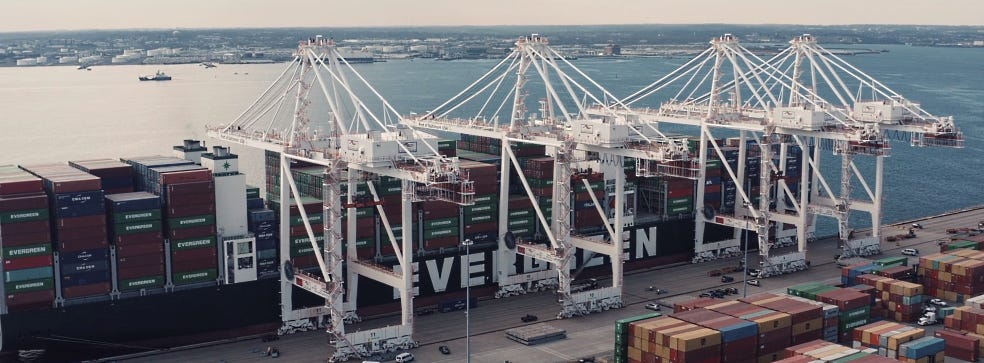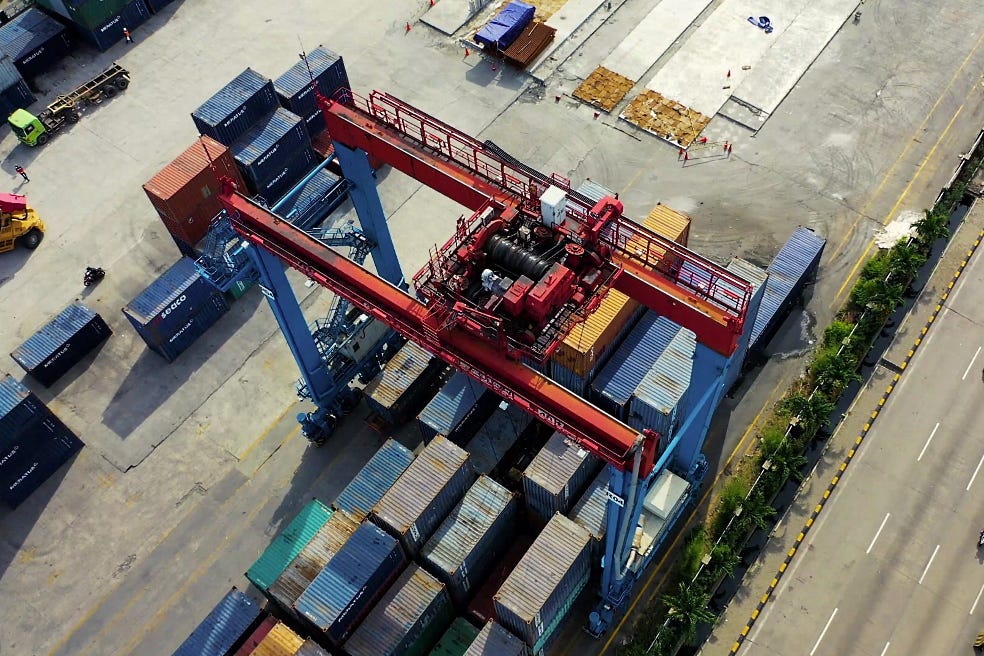Maritime and Seaports Project Finance: Lending and Loans.
Maritime and Seaports Project Finance: Lending and Loans.
Havelet Finance Limited are specialist in the business of project finance services for Maritime and seaports and long-term loans for the modernization of ports infrastructure.
Commercial Maritime and ports around the world are currently seeking new financing opportunities, using advanced technology and financial models to improve their efficiency and competitiveness. Private companies and governments must work together to develop maritime trade in a globalized world. In recent years, the concept of financing a seaport has undergone profound changes, driven by the growing costs of building, maintaining ports and terminals against the backdrop of rapid progress and growing competition. Shipping companies are no longer able to include multimillion-dollar infrastructure spending in their financial plans, so the industry needs fresh solutions.

The public sector plays an important role in the construction, expansion and modernization of seaports and port infrastructure, interacting with terminal operators and other players to ensure efficient financing of investment projects.
The variety of ways of financing the construction and development of seaport projects varies widely, ranging from full self-financing to the widespread use of external sources of financing in the form of bank lending and various project finance (PF) instruments. Havelet Finance Limited, a Channel Island finance company, offers financing for seaport projects in Europe, USA, Canada, Latin America, China, Russia, South and East Asia, Australia, the Middle East and other regions. Together with respected financial partners, we guarantee a comprehensive customized approach to each investment project. We offer loans of 10 million euros or more with a maturity of up to 20 years. We also use combined project finance (PF) instruments to implement large projects without risking the originator’s assets.
Project Finance for the construction of seaports
The concept of project finance can be traced from antiquity since the end of the 13th century, but it only became widespread after the 1930s, when banks and other financial institutions began providing unsecured long-term loans for oil and gas projects or other projects with significant growth prospects. The PF mechanism has improved over the years, and financial institutions have significantly improved loan collateral and investment project due diligence to improve the security of financing. This has had a positive impact on funding requirements and the availability of borrowed funds, which is why the beginning of the 21st century was the heyday of the era of project finance. Today, this method of financing is increasingly used for capital-intensive investment projects with long payback periods, such as the construction and modernization of seaports, cargo terminals, port infrastructure, etc. The nature of project finance is close to the nature of infrastructure projects, therefore PF instruments are considered the most suitable for financing the construction of seaports.

Benefits of project finance for seaports and terminal
Project Finance is associated with a lot of merits for participants in the process, allowing them to quickly implement capital-intensive projects with minimal risk.
Inherent characteristics of project finance include ensuring that the project has sufficient financial flows that provide a realistic opportunity to service the debt according to the payment schedule.

Current trends in funding Maritime and seaports terminals.
The traditional model for financing transport infrastructure investments is based on public funds. The key modern trend in financing projects for the construction and modernization of seaports in Western Europe is the transfer of contracts and ownership of port infrastructure from state entities (governments, municipalities) to private capital, which has proven to be effective in the implementation of such projects in a competitive environment. In order to ensure that the port infrastructure does not lose its public character and develop in accordance with the general directions of the state’s economic policy, financing mechanisms based on public-private partnerships began to gain popularity in the construction or expansion of port infrastructure.
PPP projects are actively used today in the following projects:
- Construction of seaports and container terminals.
• Expansion of the existing transport and logistics infrastructure.
• Modernization of transport and logistics infrastructure and so on.
Leading European economists point to numerous positive properties of public-private partnerships for the development of seaports. Among them, it is worth highlighting the combination of state control and private initiative, which demonstrates high flexibility and adaptability. PPPs take various forms of cooperation, with the private sector temporarily managing infrastructure and financing or co-financing capital-intensive infrastructure projects. The chronic deficit in public funding can be overcome by attracting private capital, accelerating the development of seaport infrastructure without additional burdens on state and local budgets.
Development of port infrastructure financing models
Taking into account the opposing goals of the public sector (focused on maximizing public utility) and the private sector (focused on maximizing financial benefits), it can be assumed that the participation of the private sector in the construction of seaports is complementary to traditional sources. Attempts to combine the advantages of both sectors are increasingly being undertaken in strategic areas previously under government monopoly, such as airports, seaports and railways.
Such conclusions can be drawn on the basis of studies carried out in highly developed countries (Great Britain, France, Germany, Italy, USA, Canada). Also, studies conducted by the European Bank for Reconstruction and Development showed that in the countries of Central and Eastern Europe, the share of private capital in financing seaport projects continues to increase. A similar trend is observed in most developing countries in Asia, Africa and Latin America. In the near future, experts expect an increase in support for investments in the construction and modernization of seaports from the funds of the European Union. A similar scenario is taken into account by private companies, which envisage plans for co-financing from EU funds in the development of infrastructure. In a number of countries, pressure is now mounting to attract private capital to finance infrastructure investment in port areas. With this financing model, the private investor takes on the entire investment burden.

Our financial and engineering services
If you are interested in the construction of seaports or you need long-term financing for large infrastructure projects, contact a representative of Havelet Finance Limited. Our company is ready to organize financing of large projects, advise your specialists and provide other services.
Havelet Finance Limited professional services include the following;
- Financing of projects of seaports and port infrastructure.
- Services in the field of financial modeling and investment engineering.
• Operation and management of facilities.
- Project management, etc.
Havelet Finance Limited, a trusteeship and mandates of wealthy private investors provides financing, construction and modernization of the port infrastructure. Contact our official representatives at Email: credit@havelet-finance.com to find out more.
Comments
Post a Comment